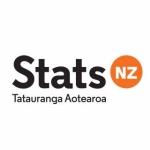Measuring New Zealand's Progress – As a country, how is New Zealand progressing?
Key Findings on New Zealand’s Progress Using a Sustainable Development Approach: 2010 - Media Release.
Internationally there are growing demands for broader measures of progress than those provided by traditional economic indicators. These demands were highlighted in the September 2009 report by the Commission on the Measurement of Economic Performance and Social Progress, commonly known as 'the Stiglitz Commission'.
Key Findings on New Zealand’s Progress Using a Sustainable Development Approach: 2010, published by Statistics New Zealand today, seeks to address these demands by presenting one overarching view of New Zealand’s long-term environmental, economic, and social progress. The indicators selected provide information about whether we are meeting our current needs, how fairly our resources are distributed, how efficiently we are using our resources, and what impact our current actions may have on the future availability of those resources.
Meeting needs – How well are we living?
The findings here are generally positive. New Zealanders’ disposable income and physical safety (shown by the rate of death from assault), have both improved. However, the annual unemployment rate, although lower than its peak of 10.6 percent in 1992, has risen over the period measured. Health expectancy (the average number of years a person lives without needing help with everyday tasks), based on data from the five-yearly Census of Population and Dwellings, improved between 1996 and 2006.
Fairness – How well are resources distributed?
Here the findings are mixed. The gap between different ethnic groups for access to early childhood education has narrowed. However, the ratio between households with high incomes and those with low incomes has widened. Over a similar period income inequality (the proportion of the population facing economic hardship due to low incomes) rose before recently returning to near the levels seen in the late 1980s.
Efficiency – How efficiently are we using our resources?
Although New Zealand’s greenhouse gas (GHG) emissions and demand for energy have increased, the economy has grown at a faster rate. This means that fewer GHG emissions are produced, and less energy is required, for each unit of value added to the New Zealand economy. In addition, since 1985 the productivity of the labour force has improved by an average of 2.0 percent per year, indicating an increase in economic activity for every paid hour worked.
Preserving resources – What are we leaving behind for our children?
Here again the findings are mixed. Educational attainment of the adult population, and the net stock of total assets per person (a measure of New Zealand’s wealth through productive assets), have both increased. However, nitrogen levels in rivers and streams and net GHG emissions have risen and the long-term trend in the distribution of selected native species, a measure of New Zealand’s biodiversity, shows a decline. Furthermore, the proportion of Māori able to hold an everyday conversation in te reo Māori, an aspect of culture unique to New Zealand, taken from the Census, decreased slightly between 1996 and 2006.
Key Findings on New Zealand’s Progress Using a Sustainable Development Approach: 2010 is the latest in a series of Statistics NZ publications that provide a broad measure of New Zealand’s progress. The report updates 13 of the 16 key indicators first published in Measuring New Zealand’s Progress Using a Sustainable Development Approach:2008. More information on these publications can be found at www.stats.govt.nz/sustainabledevelopment.
Geoff Bascand 23 February 2011
Government Statistician
